Earlier in June, we were invited to attend the UN Public Service Forum in The Hague, Netherlands to do a presentation in the forum’s track dedicated to sharing innovative practices around building inclusive, safe, resilient and sustainable cities. Cities are especially tasked with pioneering sustainability measures because 70% of the world’s population will live in an urban area by 2050.
The Sustainable Development Goals (SDGs) are 17 global goals set by the United Nations in 2015 to be achieved by 2030 . Their aim is to reduce inequity within and among countries and make the world a healthier, happier place for its inhabitants.
Participatory budgeting (PB) – direct community control over a part of public budgets – is a tool that can be used to accomplish many of the global goals.
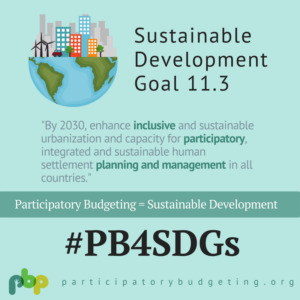
Sustainable development in cities is the result of many elements, and PB can be one of them. In order to fulfill SDG 11 we can look to section 11.3 of this goal that states,
“By 2030, enhance inclusive and sustainable urbanization and capacity for participatory, integrated and sustainable human settlement planning and management in all countries.”
In New York City, where PB is implemented across the city with council member discretionary funds, residents decide to fund capital improvements to their neighborhoods. In the most recent cycle of PBNYC, about 40% of the projects funded were for improvements to public infrastructure, making city planners of local residents through an inclusive, accessible, and engaging participatory process.
While the track we presented on focused on sustainability in urban areas for the fulfillment of SDG 11, there are other SDGs that participatory budgeting can be tool for achieving.
SDG 16 seeks to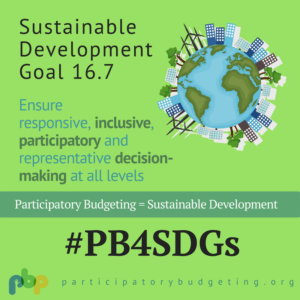
“Promote peaceful and inclusive societies for sustainable development, provide access to justice for all and build effective, accountable and inclusive institutions at all levels.”
Target 16.7 specifically spells out the call to action
“ensure responsive, inclusive, participatory and representative decision-making at all levels.”
Participatory budgeting is an optimal tool for this type of decision making. It can be used at any level of government. PB can be done within the following budgets and funds:
- City budgets
- County/Province/Ward/Borough budgets
- State budget
- Federal funds
- School districts
- Funds at the discretion of elected officials
- Department or Agency Budgets: police, public housing, transportation, parks and recreation, education, etc…
- School budgets
- College or University budgets
- NGO (non government organization) or CBO (community based organization) budgets
- Foundation funds
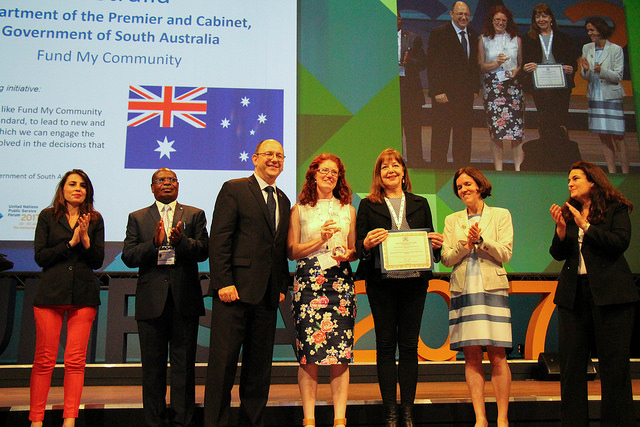
SDG 4 “Quality Education.” — In an era of increasing austerity, the majority of PB funds in New York City go to school projects which enhance the quality of education students receive by addressing pressing needs almost immediately. PBNYC funds technology upgrades in schools such as laptops, media studios and smart boards. PBNYC also funds infrastructural improvements to schools such as air conditioning and bathroom upgrades necessary for creating optimal learning environments. This is through the general municipal PB process. There are also PB processes that happen in schools and school districts (most recently in Phoenix, Arizona) which allow students to decide how to spend funds in their schools. The education young people receive through the PB process itself also has lasting impacts. Young people engaged in PB in Boston reported being more likely to vote in a local or national election.
SDG 5 “Gender Equality” — PB is a process accessible to women and girls, and we have seen women and girls are overrepresented in participant data in PB processes we support.
SDG 10 “Reduced Inequality” — PB engages marginalized communities. Similarly, Black PB voters are over-represented compared to the local community where PB is happening and Movement for Black Lives has endorsed PB as a measure for community control in its policy for Black power, freedom and justice.
PB’s contributions to the SDGs doesn’t just happen – it requires an intentional effort to be inclusive. Governments considering PB need to involve local community based organizations in their efforts. There are people on the ground in municipalities who communities trust and who have relationships with the most marginalized. Getting them on board to build a PB program will assure that its inclusivity and limit the already well resourced segments of some communities from diverting PB funds their way. Allowing grassroots organizers to run with this project, trusting them and giving them the resources needed for the implementation of participatory processes ensures sustainability.
It was an honor and privilege for us to be at the UN Public Service Forum, learning from and cultivating relationships with governments and NGOs around the world. Our message was clear: just as equity and inclusion is at the heart of sustainability, it is also at the core of PB.
To learn more about getting folks in your community onboard for PB download our Organizing Toolkit!
To learn about what it takes to start PB in your community download our Scoping Toolkit!

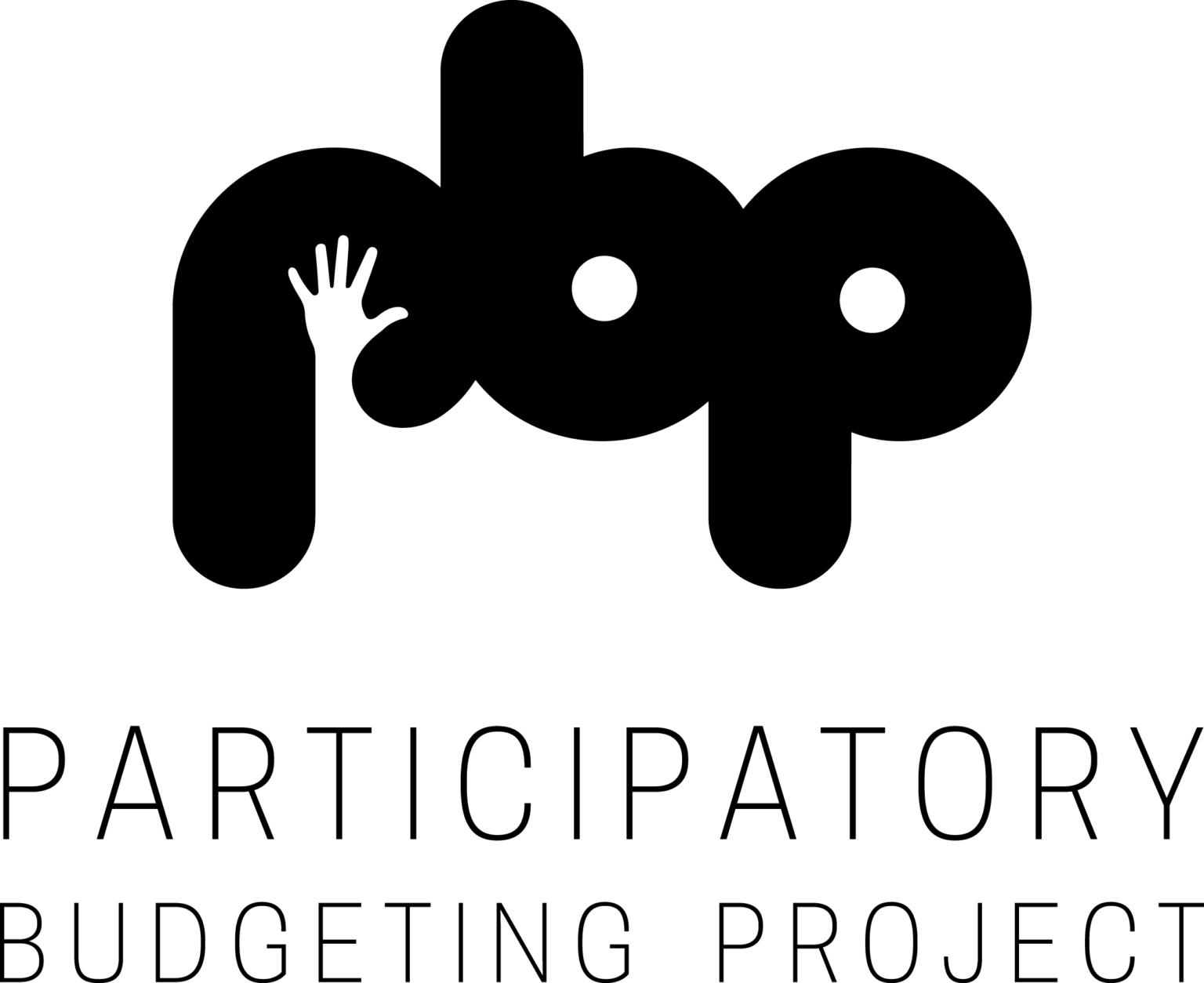
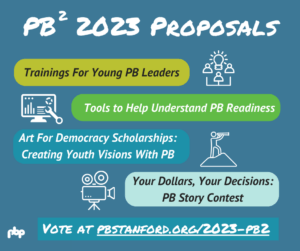
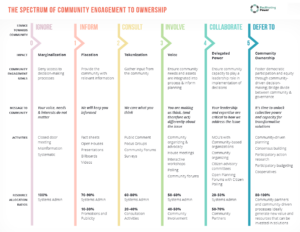
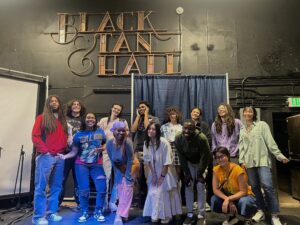

2 Responses
Love this article on PB and my community really enjoyed the PB process. Thank you Rosanna for teaching us and leading us in this process.
Love this article on PB! My Brooklyn community really enjoyed learning about PB, creating projects and the whole voting process. We’ve had a few years of terrific projects across the community. Thank you Rosanna for teaching us and leading us in this process.